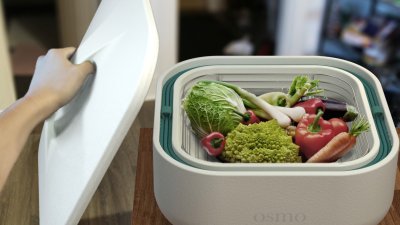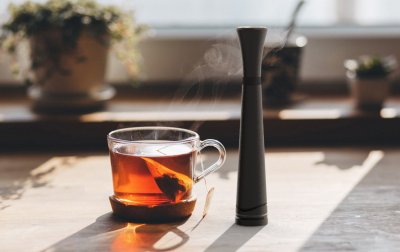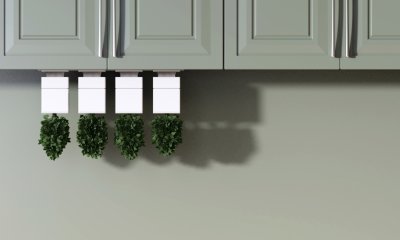Four WWU juniors win the 2022 Global Innovation Awards for their Outstanding Kitchen Appliances
WWU’s Madeleine Gerst, Rose Kirby, Elliot Quasha and Carson Porter-Keese, juniors in the Industrial Design Program, won the prestigious Global Innovation Awards (GIA) for each of their kitchenware innovations. Western students won four out of the six awards given internationally.
The GIA Awards, sponsored by the International Housewares Association, are an annual student design competition to invigorate the houseware industry with new ideas from top student designers and to encourage talented students to consider a career in the housewares business. It’s open to all design students around the world, but is based in the U.S.
Arūnas Ošlapas, professor in the Engineering and Design Department at WWU, said their class limited the project category to kitchenware. “The kitchen is a unique place in the home. It is the heart of the home and it’s where most activities occur, so we thought it was a good place to design for,” Ošlapas said.
Ošlapas said the students had to find a common problem that occurred in the kitchen, for example moldy bread, and figure out if it was worth spending time to solve.
This left the students tasked with designing a sustainable kitchen product.
In first place, Madeleine Gerst created the Wave ultraviolet-C breadbox, which allows bread to last longer by preventing mold and eliminating the need for plastic packaging. UV-C is the highest-energy portion of the UV radiation spectrum and is used commercially to prevent mold growth, but it’s not currently found in the home.
“I was looking in the kitchen where food is most wasted, and I came up with bread, which is one of the most wasted food items,” Gerst said. “Globally, almost 900,000 tons of bread is wasted annually.”
Similarly, Rose Kirby, the second-place winner from West Seattle, also designed an innovation named Osmo, an evaporative refrigerator that helps to preserve food and avert spoilage of produce.
“The evaporative refrigerator keeps fruits and vegetables cool and humid without using electricity or chemical refrigerants,” Kirby said. “It’s intended to give an alternative for keeping produce fresh other than the fridge.”
Kirby said a regular fridge creates a vicious cycle of food going bad and getting moldy. But the evaporative fridge passively evaporates water through the porous surfaces of its ceramic container, allowing consumers to preserve their fruits and vegetables for a longer period. It uses a technology that has been used since ancient times to preserve foods in hot climates.
Third place winners Elliot Quasha and Carson Porter-Keese innovated products that were also both sustainable and useful.
Elliot Quasha, from Seattle, created the Tē Immersion Boiler, which allows the user to boil a cup of water for tea with a safe and attractive immersible heater.
“This product came to be through an interest I had in tea,” Quasha said. “I wanted to develop an alternative to the electric kettle, so that is what Tē is. It utilizes an ultra-fast carbon electrode battery that allows for it to heat water to a comfortable drinking temperature.”
The other third-place winner, Carson Porter-Keese, from Kent, created the Gro Herb planter, a self-supporting planter system that absorbs moisture from the atmosphere to efficiently grow plants in the kitchen.
“It grows upside down and that is for a purpose to allow more kitchen counter space,” Porter-Keese said.
Gro has three parts—planter pods, moisture units and a base plate, all made from hemp-based bioplastic. A sliding door mechanism in the pods allows for easy access and contains the soil.
Ošlapas says the GIA competition is intense and the judges want to see proof of concept regarding the innovation’s technology, workability and how it is manufactured.
“A lot of people think that designers just make things look pretty, but our job goes way beyond that,” Ošlapas said. “We have a responsibility to the consumer to make something that is safe, better than the previous model and affordable.”


